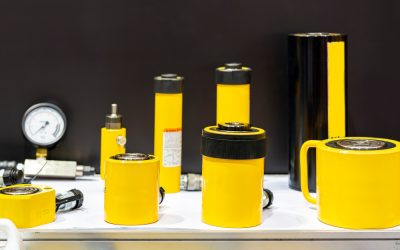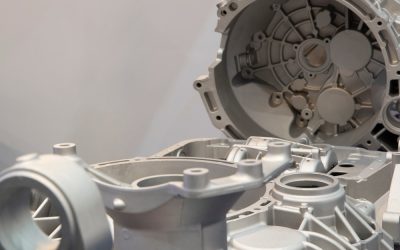In recent years, thermal efficiency has become one of the most important aspects of residential and industrial construction. Climate change and the ever-increasing costs of energy have resulted in special attention being given to a building’s thermal efficiency, which is to say, how good a structure is at preventing heat from crossing from the inside to the outside or from the outside in.
Window frames made of aluminum are extremely popular in construction: they are relatively cheap, easy to fabricate, strong, and visually appealing. However, aluminum is a highly efficient heat conductor. This is an excellent characteristic for components such as heat sinks, but it creates a problem when you want heat insulation in your product.
This article will introduce you to the concept of thermal bridges in aluminum window frames, which are often a significant source of thermal inefficiencies and can result in substantial costs dedicated to keeping away extreme temperatures from the outside. It will also introduce you to one solution to this problem: polyamide thermal breaks.
Table of Contents
What are Thermal Bridges and Thermal Breaks?
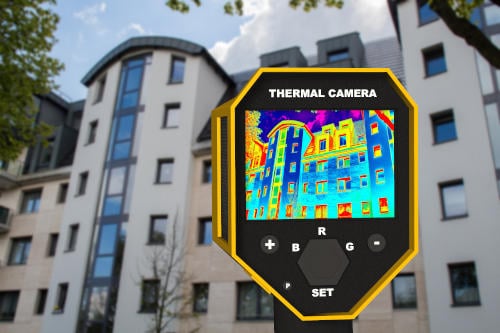
Thermal breaks and thermal bridges are concepts that go hand-in-hand. A thermal bridge works as a thermal connection, or bridge, that allows easy transfer of heat.
Regular aluminum window frames are a perfect example of thermal bridges. If you touch the aluminum frame of a window from inside your house when it’s freezing outside, you’ll probably find that the frame is also very cold.
The cold sensation in your hand indicates that your window frames are conducting, or transporting, heat to the outside of your house. Your wall is supposed to act as an insulator, but it becomes much less effective when the window frames act as a thermal bridge.
On the other hand, a thermal break is any sort of barrier that prevents this leakage, or transfer, of heat.
Regular aluminum window frames are made of a single, continuous piece of aluminum that thermally connects the inside and outside of the building. But a thermally broken window frame will have a different material that insulates the inside and outside parts of a frame, dramatically reducing heat transfer across the barrier.
How Do Polyamide Thermal Breaks Work?
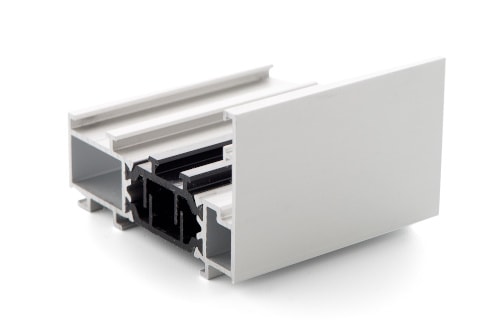
Polyamide thermal breaks (black) interlocking with two aluminum window profiles
In a thermally broken window frame, the parts of the frame inside and outside the building have to be separated so they cannot directly conduct heat. The aluminum window frame parts must be manufactured as two distinct pieces with another material in between.
The material used as the structural connection between these two aluminum pieces has to be a thermal insulator, which doesn’t conduct heat effectively. This just so happens to be an area where window manufacturers can use polyamides to achieve exceptional results.
Polyamides, such as nylon, are polymers with excellent thermal insulation properties that are a great option to connect the outside and inside parts of the window frames. By separating the inner and outer segments of the aluminum frame, heat cannot be efficiently conducted across the barrier. This effectively ‘breaks’ the thermal bridge that would otherwise exist if the frame was made as a single, solid piece.
Should I Consider Thermally Broken Windows for my Building?
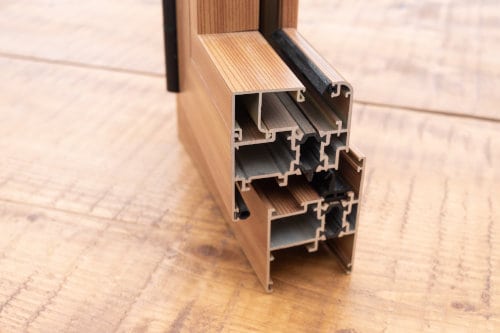
Wood look aluminum profiles with polyamide thermal breaks
With worsening weather extremes, rising heating and air conditioning prices, and the shift toward more energy-efficient buildings, we can expect thermally broken windows to become an even more significant aspect of the infrastructure around us.
When coupled with glazed window panes, thermally broken windows dramatically improve the insulating ability of your residential or commercial project, which will be directly reflected in heating and cooling costs.
If you’re interested in having thermally broken windows as part of your next project, please visit our Thermally Broken Aluminum Windows page for more information on what Gabrian has to offer.

